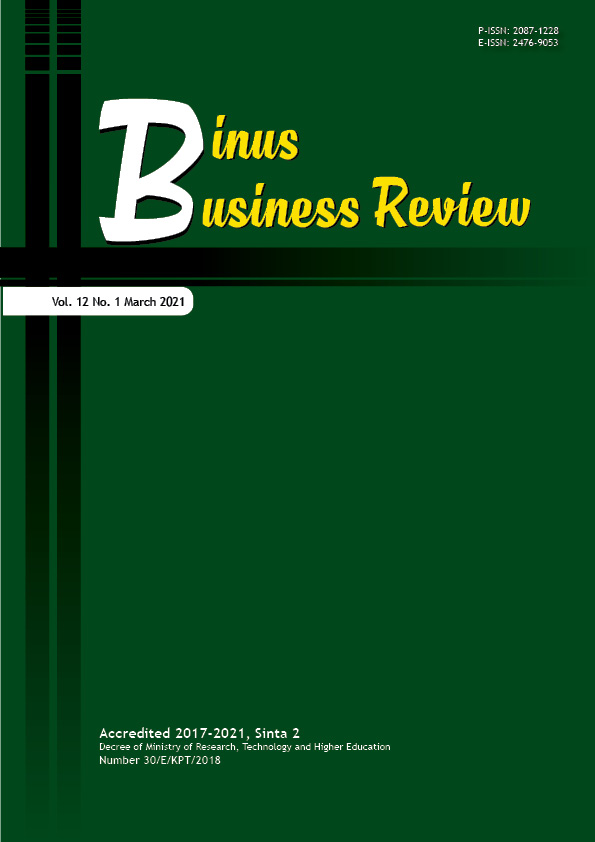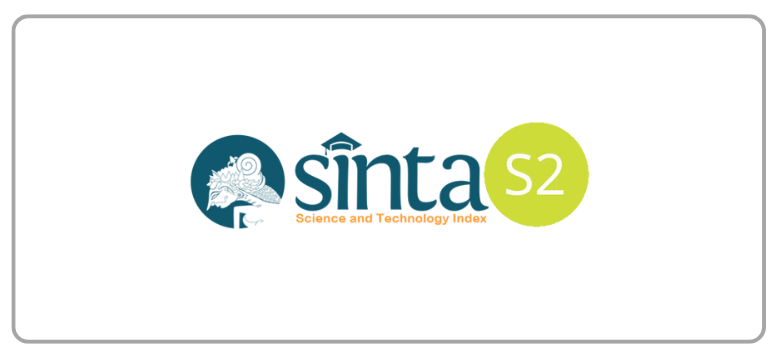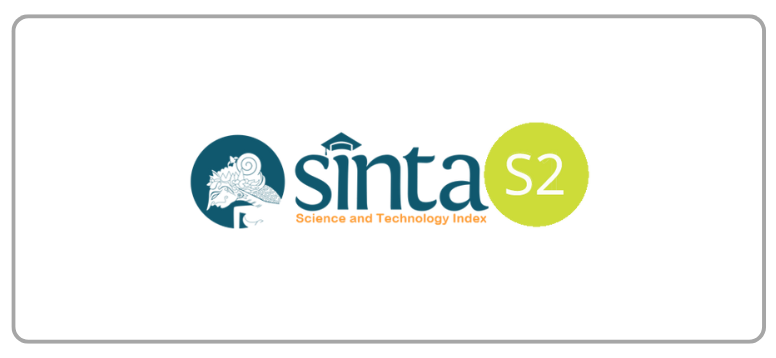The Determinant Factors in Using E-Samsat Services on Motorized Vehicle Tax Payment in East Java, Indonesia
DOI:
https://doi.org/10.21512/bbr.v12i1.6496Keywords:
intention to use, e-Samsat services, motorized vehicle tax paymentAbstract
E-Samsat offers the service regarding motorized vehicle tax payment online. Still, in its implementation, it does
not have many users. It is due to the community’s lack of awareness and the advantages that it can offer. The
research aimed to analyze the determinant factors in using the e-Samsat service in East Java. The effects of each
variable (trust, awareness, ease of use, and intention to use) on each other were examined. The research was
conducted at Samsat joint office in Surabaya because it was the area with the largest motorized vehicle in East
Java. The research applied a quantitative approach. There were 200 respondents who were users of the service.
They were selected using the cross-section technique through questionnaires. Then, data analysis used the Partial
Least Square Structural Equation Modeling (PLS-SEM) approach. Data analysis results indicate that almost all
hypotheses are acceptable and have a significant effect on each other. However, trust does not have a significant
effect on the intention to use. The analysis of these factors can be recommended to increase the acceptance of
e-Samsat services in East Java. The research can help the government to make decisions related to e-government,
create technological innovations that facilitate payments, and improve e-Samsat services quality.
References
Abu-Shanab, E. A. (2017). E-government familiarity influence on Jordanians’ perceptions. Telematics and Informatics, 34(1), 103-113. https://doi.org/10.1016/j.tele.2016.05.001
Alotaibi, R., Houghton, L., & Sandhu, K. (2016). Exploring the potential factors influencing the adoption of m-government services in Saudi Arabia: A qualitative analysis. International Journal of Business and Management, 11(8), 56-72. https://doi.org/10.5539/ijbm.v11n8p56
Andreas, & Savitri, E. (2015). The effect of tax socialization, tax knowledge, expediency of tax ID number and service quality on taxpayers compliance with taxpayers awareness as mediating variables. Procedia - Social and Behavioral Sciences, 211, 163-169. https://doi.org/10.1016/j.sbspro.2015.11.024
Buffat, A. (2015). Street-level bureaucracy and e-government. Public Management Review, 17(1), 149-161. https://doi.org/10.1080/14719037.2013.771699
Bwalya, K. J., Du Plessis, T., & Rensleigh, C. (2014). E-government implementation in Zambia – Prospects. Transforming Government: People, Process and Policy, 8(1), 101-130. https://doi.org/10.1108/TG-01-2013-0002
Carter, L., McFadden-Wade, G., & Wells, J. T. (2016). Exploring the impact of organizational citizenship behavior on perceptions of e-filing success. International Journal of Public Administration in the Digital Age (IJPADA), 3(1), 43-52. https://doi.org/10.4018/ijpada.2016010103
Chatzoglou, P., Chatzoudes, D., & Symeonidis, S. (2015). Factors affecting the intention to use e-government services. In Proceedings of the 2015 Federated Conference on Computer Science and Information Systems (pp. 1489-1498). https://doi.org/10.15439/2015f171
Das, A., Singh, H., & Joseph, D. (2017). A longitudinal study of e-government maturity. Information & Management, 54(4), 415-426. https://doi.org/10.1016/j.im.2016.09.006
Fakhoury, R., & Aubert, B. (2015). Citizenship, trust, and behavioural intentions to use public e-services: The case of Lebanon. International Journal of Information Management, 35(3), 346-351. https://doi.org/10.1016/j.ijinfomgt.2015.02.002
Gasova, K., & Stofkova, K. (2017). E-government as a quality improvement tool for citizens’ services. Procedia Engineering, 192, 225-230. https://doi.org/10.1016/j.proeng.2017.06.039
Kayimbaşioǧlu, D., Oktekin, B., & Haci, H. (2016). Integration of gamification technology in education. Procedia Computer Science, 102, 668-676. https://doi.org/10.1016/j.procs.2016.09.460
Kurfalı, M., Arifoğlu, A., Tokdemir, G., & Paçin, Y. (2017). Adoption of e-government services in Turkey. Computers in Human Behavior, 66(January), 168-178. https://doi.org/10.1016/j.chb.2016.09.041
Kvasnicova, T., Kremenova, I., & Fabus, J. (2016). From an analysis of e-services definitions and classifications to the proposal of new e-service classification. Procedia Economics and Finance, 39, 192-196. https://doi.org/10.1016/s2212-5671(16)30282-9
Lallmahomed, M. Z. I., Lallmahomed, N., & Lallmahomed, G. M. (2017). Factors influencing the adoption of e-government services in Mauritius. Telematics and Informatics, 34(4), 57-72. https://doi.org/10.1016/j.tele.2017.01.003
Latan, H., & Ghozali, I. (2016). Partial Least Square konsep, metode dan aplikasi menggunakan WarpPLS 5.0. Semarang: Badan Penerbit Universitas Diponegoro.
Mathiyarasan, M., & Chitra, V. (2019). A study on customer awareness towards internet banking-with reference to Tumkurdistrict. SAARJ Journal on Banking & Insurance Research, 8(3), 17-27. https://doi.org/10.5958/2319-1422.2019.00011.0
Mensah, I. K. (2018). Citizens’ readiness to adopt and use e-government services in the city of Harbin, China. International Journal of Public Administration, 41(4), 297-307. https://doi.org/10.1080/01900692.2016.1263658
Mota, F. P. B., Bellini, C. G. P., Souza, J. M. D. S., & Oliveira, T. D. J. N. (2016). The influence of civic mindedness, trustworthiness, usefulness, and ease of use on the use of government websites. Revista de Administração, 51(4), 344-354. https://doi.org/10.1016/j.rausp.2016.07.002
Mustapha, B., & Obid, S. N. B. S. (2015). Tax service quality: The mediating effect of perceived ease of use of the online tax system. Procedia - Social and Behavioral Sciences, 172, 2-9. https://doi.org/10.1016/j.sbspro.2015.01.328
Onu, D., & Oats, L. (2018). Tax talk: An exploration of online discussions among taxpayers. Journal of Business Ethics, 149, 931-944. https://doi.org/10.1007/s10551-016-3032-y
Pitchay Muthu Chelliah, P., Thurasamy, R., Alzahrani, A. I., Alfarraj, O., & Alalwan, N. (2016). E-government service delivery by a local government agency: The case of e-licensing. Telematics and Informatics, 33(4), 925-935. https://doi.org/10.1016/j.tele.2016.02.003
Prior, D. D., Mazanov, J., Meacheam, D., Heaslip, G., & Hanson, J. (2016). Attitude, digital literacy and self efficacy: Flow-on effects for online learning behavior. The Internet and Higher Education, 29(April), 91-97. https://doi.org/10.1016/j.iheduc.2016.01.001
Rajiani, I., & Ismail, N. (2019). Management innovation in balancing technology innovation to harness universities performance in the era of Community 4.0. Polish Journal of Management Studies, 19(1), 309-321. https://doi.org/10.17512/pjms.2019.19.1.24
Suryanto, T. L. M., Setyohadi, D. B., & Faroqi, A. (2016). Analysis of the effect of information system quality to intention to reuse of employee management information system (Simpeg) based on information systems success model. MATEC Web of Conferences, 58, 1-6. https://doi.org/10.1051/matecconf/20165803001
Widodo, M., Irawan, M. I., & Sukmono, R. A. (2019). Extending UTAUT2 to explore digital wallet adoption in Indonesia. In 2019 International Conference on Information and Communications Technology (ICOIACT) (pp. 878-883). IEEE.
Downloads
Published
How to Cite
Issue
Section
License
Copyright (c) 2021 Rita Ambarwati, Mudji Astuti, Rohman Dijaya, Retna Fetty Idamayanti

This work is licensed under a Creative Commons Attribution-ShareAlike 4.0 International License.
Authors who publish with this journal agree to the following terms:
a. Authors retain copyright and grant the journal right of first publication with the work simultaneously licensed under a Creative Commons Attribution License - Share Alike that allows others to share the work with an acknowledgment of the work's authorship and initial publication in this journal.
b. Authors are able to enter into separate, additional contractual arrangements for the non-exclusive distribution of the journal's published version of the work (e.g., post it to an institutional repository or publish it in a book), with an acknowledgment of its initial publication in this journal.
c. Authors are permitted and encouraged to post their work online (e.g., in institutional repositories or on their website) prior to and during the submission process, as it can lead to productive exchanges, as well as earlier and greater citation of published work.
USER RIGHTS
All articles published Open Access will be immediately and permanently free for everyone to read and download. We are continuously working with our author communities to select the best choice of license options, currently being defined for this journal as follows: Creative Commons Attribution-Share Alike (CC BY-SA)



























